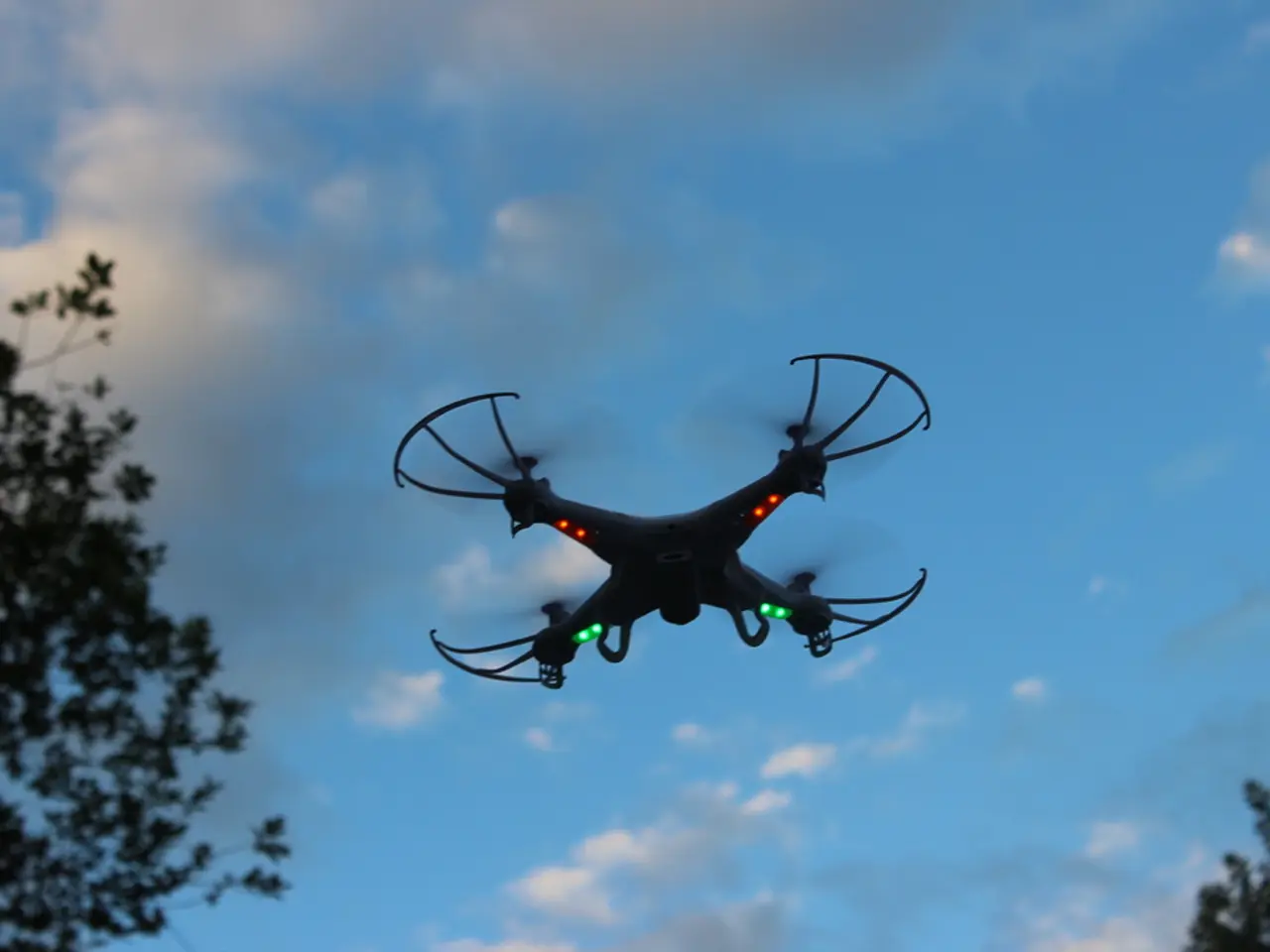Strategies for Retrieving Misplaced Drones: 9 Brilliant Methods to Recover Yours
Losing a drone can be a frustrating experience for any enthusiast. However, with the right strategies and utilisation of the drone's features, recovering a lost drone is possible. Here are some effective methods to help you find your missing device.
First-Person View (FPV) Troubleshooting
Check and restore the video transmission from the drone by inspecting and fixing antenna connections on the video transmitter to regain the visual signal. Verify receiver signals and failsafe settings to prevent unexpected disconnections during flight control. Inspect the flight controller and battery to ensure the drone is operational.
Search Immediately and Use Visual Clues
The faster you start searching, the higher the chances of recovery. If possible, use imagery or recorded video footage recorded before loss to familiarise yourself with the last known surroundings and route of the drone. This can help in retracing its path and narrowing search areas.
Poll the Last Known GPS Location
Many drones log GPS data. Accessing the last logged GPS position, either via the controller, mobile app, or memory card, provides a concrete starting point for physical search.
Physical Methods for Tree or Obstruction Retrieval
If stuck in trees or high places, techniques may include manual attempts with poles, cautious climbing, or shaking the branches. In real-recovery scenarios, these methods have proven effective.
Prepare for Emergency or Automated Recovery
Advanced recovery mechanisms might include deployment of parachutes or automated landing protocols that activate during emergencies, potentially safely bringing the drone to ground or water for easier recovery.
Covering More Ground
To cover more ground, send another drone up to perform a careful grid search from above, and snap pictures of anything unusual to examine up close later. In indoor searches, turn off anything loud, listen carefully for buzzing or beeping, and take a flashlight to check hidden corners. Flying in a grid-shaped pattern helps cover the area faster than searching on foot.
Utilising Technology for Recovery
In outdoor searches, move outward in a spiral from the drone's final recorded location, and shine a flashlight around to catch any reflective parts. When losing drone signal, quickly open the flight app, view GPS details, and use the "Find My Drone" tool to find the drone's last spot within about 20 feet.
Pairing thermal imaging with other techniques helps a lot in drone recovery. New tracking devices, like the compact TK102, will transform drone ownership, sending instant location updates straight to your smartphone, pinpointing the exact spot your drone touched down. An overhead view gives a clear advantage, especially over thick forests or wide fields where visibility from the ground stays limited.
Community Involvement
Local residents can really help find a lost drone; posting clear images of the drone on community platforms like Facebook groups and NextDoor can be effective.
Preventing Losses
To prevent drone losses, setting up the Return-To-Home (RTH) features correctly is key. Keep drones safe from loss by picking a Return-To-Home height that easily clears all nearby objects, attaching a separate GPS tracker for added backup, and always maintaining visual contact while flying. Experienced pilots understand that flying within sight range means fewer lost drones and higher-quality aerial shots.
Cost-Effective Solutions
GPS tracking gives a huge advantage when drones go missing; popular DJI models have GPS built-in and send their location straight to the phone app or controller. Listening for drone beeping sounds can help track it down, especially combined with other ways of searching. GPS trackers and recovery apps are cost-effective compared to replacing an entire drone.
In summary, recover a lost drone by quickly initiating a search using GPS and video feeds to locate its last position; troubleshoot video and control signals to regain control or visual; use video footage to guide search patterns; and apply physical recovery strategies if the drone is stuck in hard-to-reach places. Advanced drones may have safety features that aid in recovery after system failures.
- To enhance drone recovery efforts, consider using technological advancements such as the TK102 tracking device, which sends instant location updates to your smartphone, pinpointing the exact spot your drone landed.
- In the future, artificial-intelligence (AI) and smartphone integration can potentially revolutionize drone management, making it easier to find lost devices and improving overall flying experiences.




